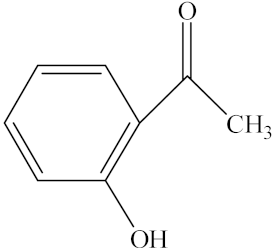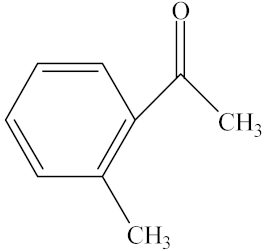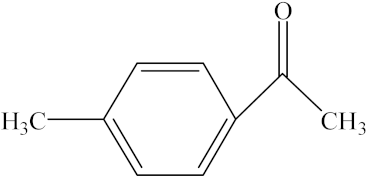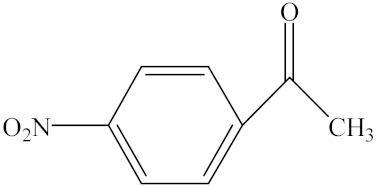Catalytic Reduction of Acetophenone Promoted with Quinuclidinol-Based Quaternary Ammonium Ionic Liquid as a Sustainable Solvent †
Abstract
:1. Introduction
2. Experiment
2.1. Reagents and Materials
2.2. Instruments
2.3. Synthesis of Quinuclidinol-Based Quaternyl Ammonium Ionic Liquids
2.4. Reduction of Acetophenone
3. Results and Discussion
3.1. Investigation on Reaction Conditions
3.1.1. Effect of the IL Anions on the Reaction Results
3.1.2. Effect of Different Solvents on the Reaction Results
3.1.3. Effect of IL Dosage on the Reaction Results
3.1.4. Effect of Temperature on the Reaction
3.2. Expansion of Reaction Substrate
3.3. Potential Reaction Mechanism
3.4. Recovery and Reuse of IL
4. Conclusions
Author Contributions
Funding
Institutional Review Board Statement
Informed Consent Statement
Data Availability Statement
Acknowledgments
Conflicts of Interest
References
- Pendleton, J.N.; Gilmore, B.F. The antimicrobial potential of ionic liquids: A source of chemical diversity for infection and biofilm control. Inter. J. Antimicrob. Agents 2015, 46, 131–139. [Google Scholar] [CrossRef] [PubMed]
- Zhao, Y.; Han, B.; Liu, Z. Ionic-liquid-catalyzed approaches under metal-free conditions. Acc. Chem. Res. 2021, 54, 3172–3190. [Google Scholar] [CrossRef] [PubMed]
- Chinnappan, A.; Tamboli, A.H.; Chung, W.J.; Kim, H. Green synthesis, characterization and catalytic efficiency of hypercross-linked porous polymeric ionic liquid networks towards 4-nitrophenol reduction. Chem. Eng. J. 2016, 285, 554–561. [Google Scholar] [CrossRef]
- Javle, B.R.; Kinage, A.K. Chiral amino-acid-amide based ionic liquids as a stereoselective organocatalyst in asymmetric transfer hydrogenation of acetophenone at room-temperature. Chemistryselect 2018, 3, 2365–6549. [Google Scholar] [CrossRef]
- Singh, S.K.; Savoy, A.W. Ionic liquids synthesis and applications: An overview. J. Mol. Liq. 2020, 297, 112038. [Google Scholar] [CrossRef]
- Su, Z.; Zhang, L.; Zhang, Y.P. Ionic liquid/water mixed solvent promotes the reduction of aldosterone. J. Lanzhou Univ. Technol. 2008, 34, 74–76. [Google Scholar]
- Özlem, A.; Emine, B.; Ülkü, M. Determination of effective diffusion coefficient of acetophenone in κ-carrageenan and asymmetric bioreduction in packed bed reactor. J. Mol. Catal. B Enzym. 2011, 72, 46–52. [Google Scholar]
- Yu, B.; Zhou, F.; Liu, G.; Liang, Y.; Huck, W.T.S.; Liu, W. The electrolyte switchable solubility of multi-walled carbon nanotube/ionic liquid (MWCNT/IL) hybrids. Chem. Commun. 2006, 22, 2356–2358. [Google Scholar] [CrossRef]
- Ogoshi, T.; Onodera, T.; Yamagishi, T.-A.; Nakamoto, Y. Green polymerization of phenol in ionic liquids. Macromolecules 2008, 41, 8533–8536. [Google Scholar] [CrossRef]
- Bertero, N.M.; Trasarti, A.F.; Apesteguía, C.R.; Marchi, A.J. Solvent effect in the liquid-phase hydrogenation of acetophenone over Ni/SiO2: A comprehensive study of the phenomenon. Appl. Catal. A Gen. 2011, 394, 228–238. [Google Scholar] [CrossRef]
- Akopyan, A.V.; Eseva, E.; Polikarpova, P.; Kedalo, A.; Vutolkina, A.; Glotov, A.P. Deep Oxidative desulfurization of fuels in the presence of brönsted acidic polyoxometalate-based ionic liquids. Molecules 2020, 25, 536. [Google Scholar] [CrossRef] [PubMed]
- Xu, J.; Wei, T.; Zhang, Q. Effect of Temperature on the Enantioselectivity in the Oxazaborolidine-Catalyzed Asymmetric Reduction of Ketones. Noncatalytic Borane Reduction, a Non-neglectable Factor in the Reduction System. J. Org. Chem. 2003, 68, 10146–10151. [Google Scholar] [CrossRef]
- Sun, W.; Xia, C.G.; Zhao, P.Q. Chiral salen-Co(II) complex catalyzed asymmetric reduction of acetophenone with sodium borohydride. Acta Chim. Sin. 2001, 59, 976–978. [Google Scholar]







| Experimental Group | Catalyst | IL Content | Reaction Time/h | Yield (%) |
|---|---|---|---|---|
| 1 | [MenQu]Cl | 20 mol% | 2 h | 77.7 |
| 2 | [MenQu]BF4 | 20 mol% | 2 h | 63.7 |
| 3 | [MenQu]PF6 | 20 mol% | 3 h | 66.3 |
| 4 | [MenQu]CF3SO3 | 20 mol% | 3 h | 60.2 |
| Experimental Group | Catalyst | Solvent | Reaction Time/h | Yield (%) |
|---|---|---|---|---|
| 1 | [MenQu]Cl | isopropanol | 4.5 h | 70.0 |
| 2 | [MenQu]Cl | THF | 20 h | 54.29 |
| 3 | [MenQu]Cl | EtOH | 1 h | 88.6 |
| 4 | [MenQu]Cl | MeOH | 1 h | 79.2 |
| 5 | [MenQu]Cl | n-Hexanol | 24 h | - |
| 6 | [MenQu]Cl | DMF | 4 h | 73.0 |
| 7 | [MenQu]Cl | glycol | 9 h | 87.8 |
| 8 | [MenQu]Cl | glycerol | 9 h | 67.9 |
| 9 | [MenQu]Cl | n-Butanol | 24 h | - |
| 10 | [MenQu]Cl | H2O | 2 h | 77.7 |
| Experimental Group | Catalyst | IL Content (mol%) | Reaction Time (h) | Yield (%) |
|---|---|---|---|---|
| 1 | [MenQu]Cl | 10 | 1 | 78.9 |
| 2 | [MenQu]Cl | 20 | 1 | 88.6 |
| 3 | [MenQu]Cl | 40 | 1 | 82.5 |
| 4 | [MenQu]Cl | 60 | 1 | 81.6 |
| 5 | [MenQu]Cl | 100 | 1 | 80.7 |
| Experimental Group | Catalyst | Reaction Temperature (°C) | Reaction Time (h) | Yield (%) |
|---|---|---|---|---|
| 1 | [MenQu]Cl | 25 | 1 | 88.6 |
| 2 | [MenQu]Cl | 10 | 1.5 | 73.1 |
| 3 | [MenQu]Cl | 0 | 2 | 71.9 |
| 4 | [MenQu]Cl | −10 | 4 | 70.3 |
| 5 | [MenQu]Cl | −20 | 10 | 68.9 |
| Experimental Group | Reaction Substrate | Reaction Temperature (°C) | Reaction Time (h) | Yield (%) |
|---|---|---|---|---|
| 1 |  | 25 | 2 | 88.5 |
| 2 |  | 25 | 4 | 91.3 |
| 3 |  | 25 | 4 | 84.2 |
| 4 |  | 25 | 0.5 | 94.8 |
| 5 |  | 25 | 1 | 86.1 |
Disclaimer/Publisher’s Note: The statements, opinions and data contained in all publications are solely those of the individual author(s) and contributor(s) and not of MDPI and/or the editor(s). MDPI and/or the editor(s) disclaim responsibility for any injury to people or property resulting from any ideas, methods, instructions or products referred to in the content. |
© 2023 by the authors. Licensee MDPI, Basel, Switzerland. This article is an open access article distributed under the terms and conditions of the Creative Commons Attribution (CC BY) license (https://creativecommons.org/licenses/by/4.0/).
Share and Cite
Zhou, G.; Chen, H.; Li, R.; Cao, Y.; Yao, S. Catalytic Reduction of Acetophenone Promoted with Quinuclidinol-Based Quaternary Ammonium Ionic Liquid as a Sustainable Solvent. Eng. Proc. 2023, 55, 37. https://doi.org/10.3390/engproc2023055037
Zhou G, Chen H, Li R, Cao Y, Yao S. Catalytic Reduction of Acetophenone Promoted with Quinuclidinol-Based Quaternary Ammonium Ionic Liquid as a Sustainable Solvent. Engineering Proceedings. 2023; 55(1):37. https://doi.org/10.3390/engproc2023055037
Chicago/Turabian StyleZhou, Gaojin, Hangping Chen, Ruoheng Li, Yu Cao, and Shun Yao. 2023. "Catalytic Reduction of Acetophenone Promoted with Quinuclidinol-Based Quaternary Ammonium Ionic Liquid as a Sustainable Solvent" Engineering Proceedings 55, no. 1: 37. https://doi.org/10.3390/engproc2023055037
APA StyleZhou, G., Chen, H., Li, R., Cao, Y., & Yao, S. (2023). Catalytic Reduction of Acetophenone Promoted with Quinuclidinol-Based Quaternary Ammonium Ionic Liquid as a Sustainable Solvent. Engineering Proceedings, 55(1), 37. https://doi.org/10.3390/engproc2023055037







